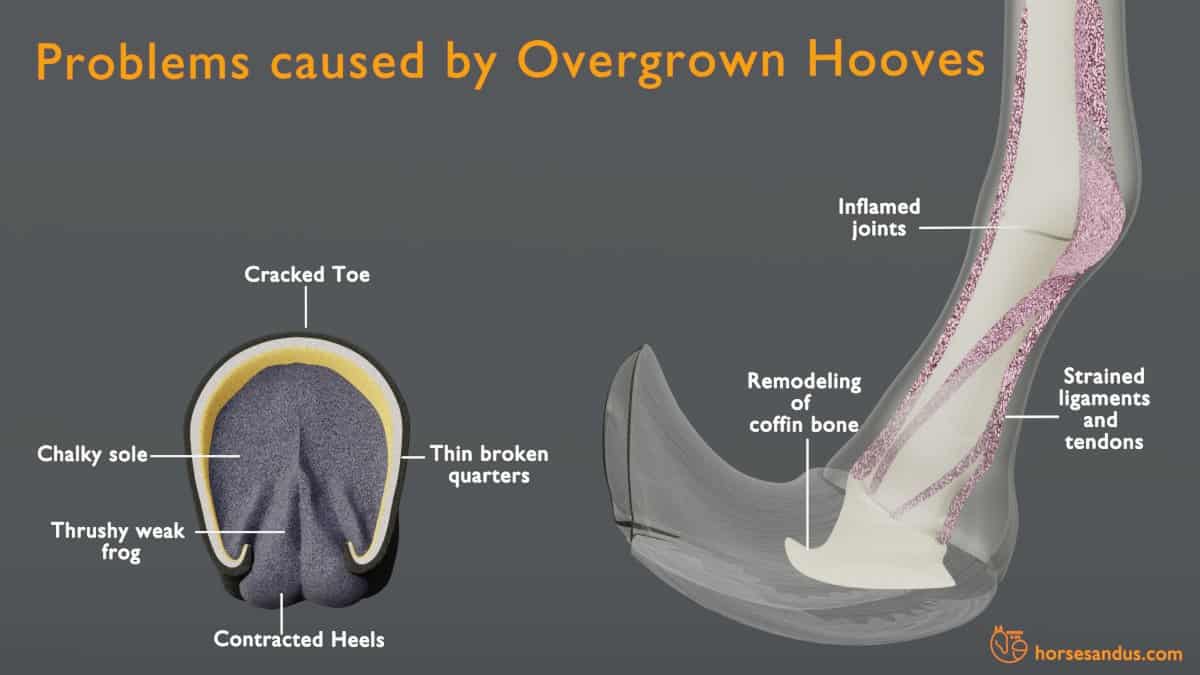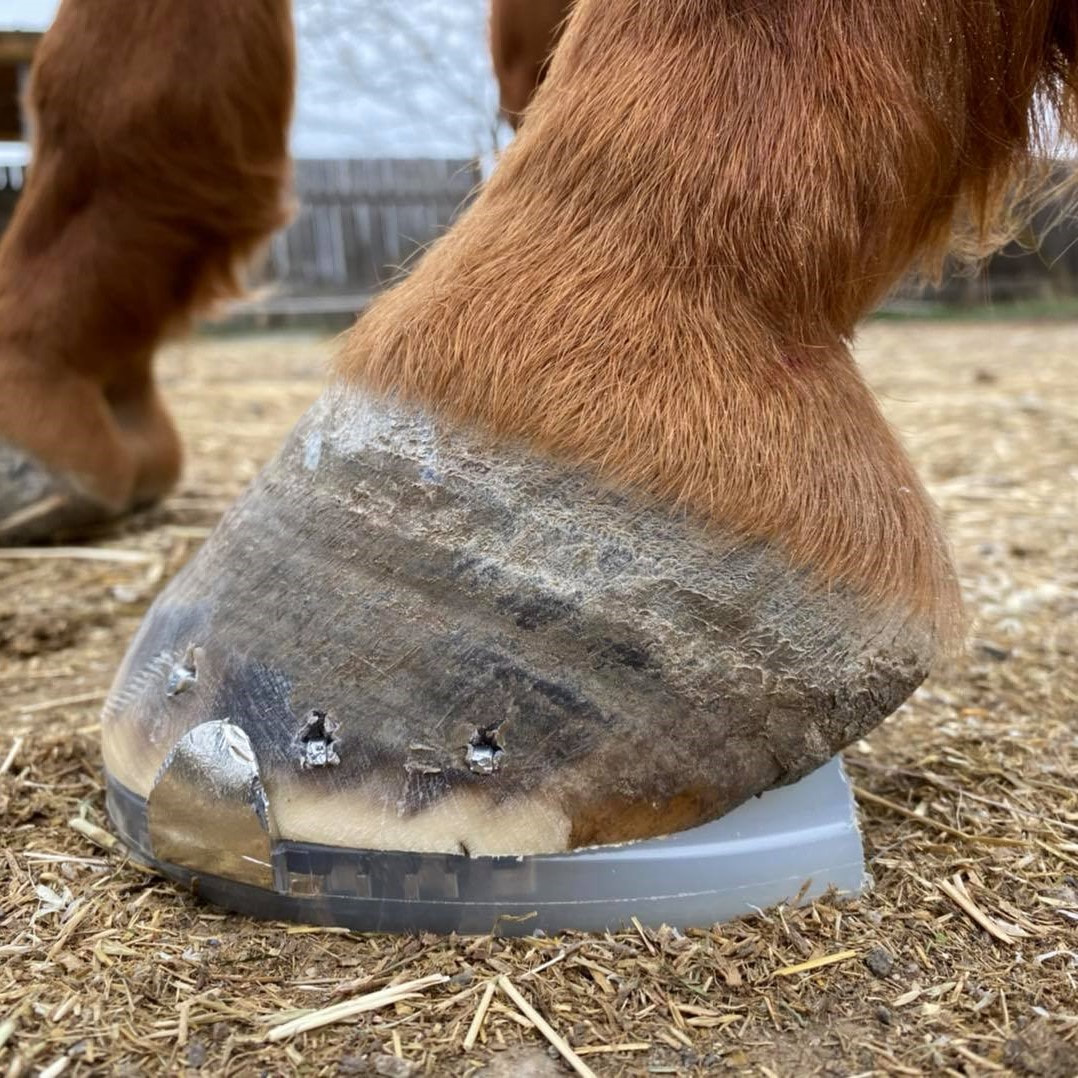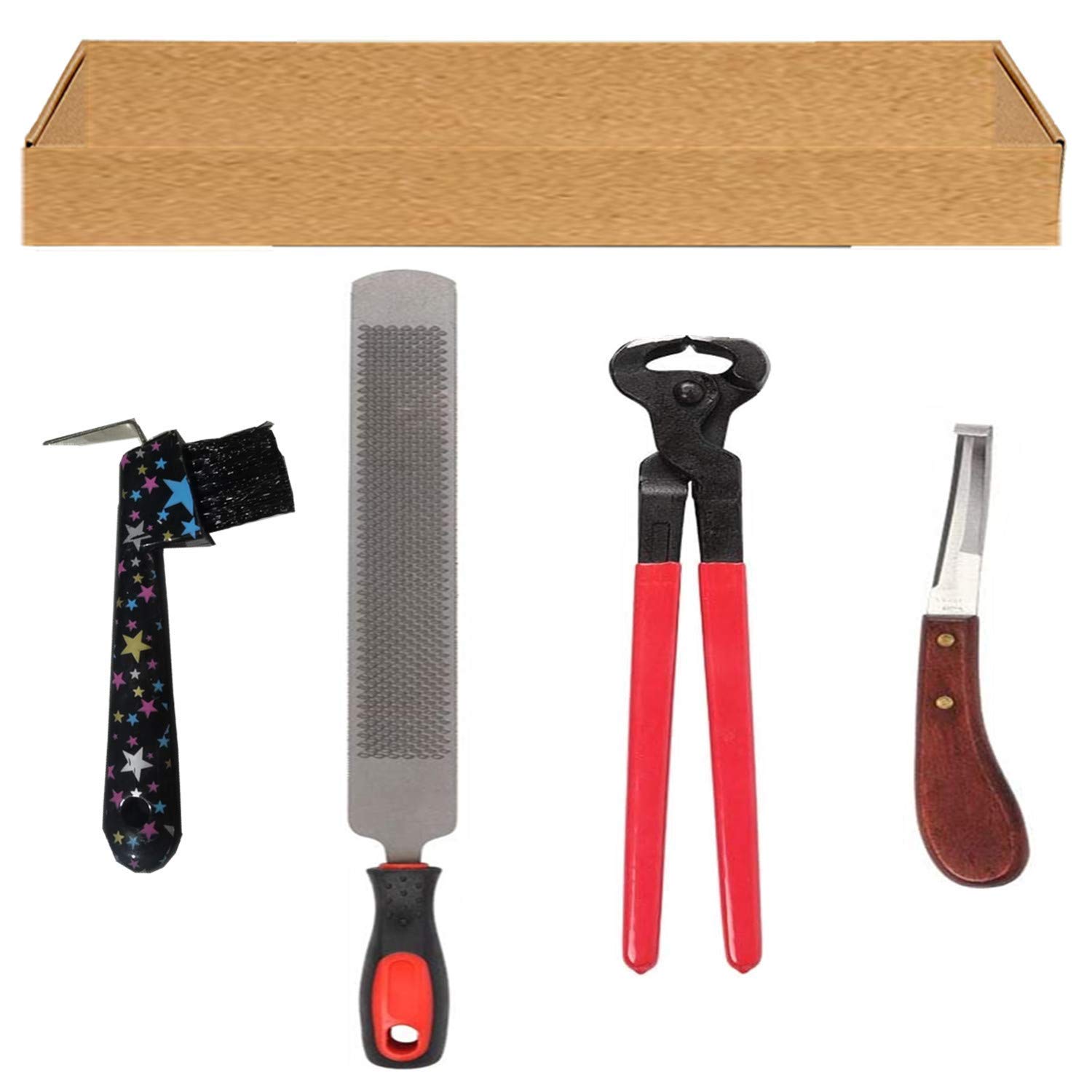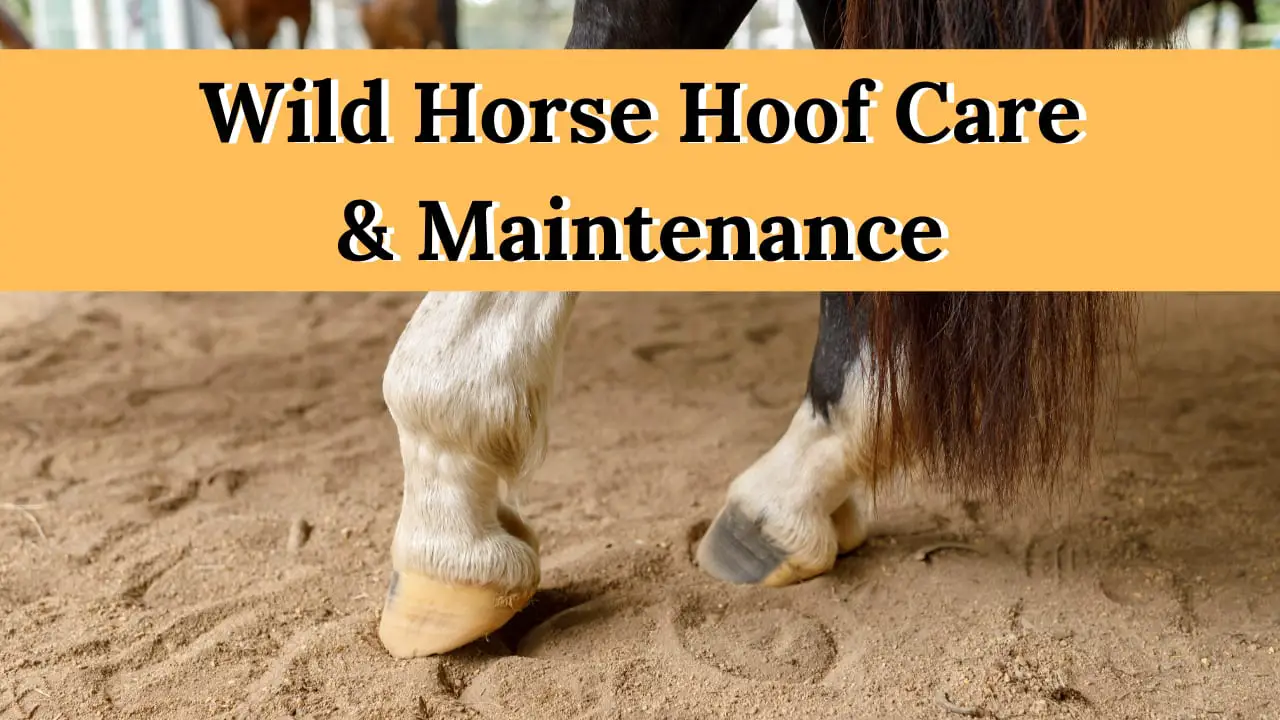Wild horses are the epitome of resilience and self-sufficiency, and their ability to maintain their hooves without human intervention is a testament to this. Unlike domestic horses that require regular care from a farrier, wild equines have developed a system of natural hoof maintenance that keeps their hooves in good condition. So, how do wild horses clean their hooves? Let’s delve into the behaviors, natural elements, and environmental factors that play a role in the hoof health of these majestic animals.
- Wild horses move many kilometers a day across a variety of surfaces, which naturally wears down their hooves.
- They traverse different terrains such as rocky ground and riverbeds that help to trim and clean their hooves.
- Hydration from natural water sources is crucial for maintaining hoof moisture balance, which contributes to hoof health.
Exploring the Natural Care of Equine Hooves

The resilience of wild equines is clearly manifested in their hoof health, which is maintained through inherent lifestyle habits and environmental interactions. Evolution has endowed these animals with a hoof anatomy that allows them to endure a life in the wild, adapting to the demands of their natural habitat. This segment will shed light on the anatomy of the hoof and the internal and genetic factors that contribute to its health.
Anatomy and Function: The Hoof’s Natural Defense System
The equine hoof is a marvel of natural engineering, designed to withstand the challenges of the wild. Its exterior, the hoof wall, is made up of tough keratinized cells that shield it from the elements. Beneath this armor lies the sole, a robust platform that evenly spreads the horse’s weight, and the frog, which, along with the digital cushion, absorbs the shock of movement, protecting the internal structures from the impact of their constant roaming.
- The hoof wall serves as a barrier against harsh surfaces and potential injuries.
- The sole and frog, along with the digital cushion, form a comprehensive shock-absorbing system.
Exploring the Internal Dynamics of Hoof Health
Internal factors are just as influential in the hoof health of wild equines. Efficient blood circulation within the hoof capsule is critical, as it delivers nutrients that foster growth and reinforce the hoof’s structure. The natural behavior of wild horses, involving continuous motion, enhances this circulation, thereby reinforcing hoof vitality and resistance to diseases.
- Effective blood flow ensures nutrient-rich circulation within the hoof.
- Constant movement is a natural stimulant for good circulation and hoof health.
Nutrition’s Role in Hoof Strength
The foraging lifestyle of wild horses provides them with a diet rich in variety, supplying all the essential nutrients for hoof strength. This natural diet is sufficient for their needs, unlike domestic horses that may require additional supplements. The nutrients from their wild diet help build hoof integrity from within, contributing to the durability of their hooves.
- Wild equines benefit from a natural diet that supports hoof health.
- Their foraging habits prevent the nutritional deficiencies common in domestic horses.
Genetic Contributions to Hoof Durability
Through the process of natural selection, wild horses have developed genetic traits that promote the growth of strong and self-sufficient hooves. These genetic advantages are the result of generations adapting to the unforgiving wilderness, ensuring that only those with the most resilient hooves survive and pass on their traits.
- Evolution has favored genes that enhance hoof strength in wild equines.
- These advantageous genetic traits are inherited, benefiting successive generations.
Maintaining Hoof Health in the Wild: A Closer Look

Exploring the intricate relationship between wild horses and their habitat unveils how they uphold hoof well-being. These free-roaming equines have evolved sophisticated self-care methods that enable them to cope with an array of landscapes, highlighting the seamless integration of wildlife into their ecosystems.
Instinctual Actions for Hoof Upkeep
While roaming their environment, wild horses exhibit behaviors that inadvertently aid in keeping their hooves in good shape. As they wade through bodies of water, the softening effect of moisture helps release trapped debris. Additionally, the social interactions within the herd, such as mutual grooming, can inadvertently assist in hoof upkeep by dislodging any unwanted material.
- Water exposure aids in removing debris from the hooves.
- Herd dynamics contribute to unintended hoof grooming.
Hoof Health and Environmental Interactions
In their quest for sustenance and shelter, wild horses cover extensive distances, which naturally helps in hoof filing through the constant contact with ground surfaces of varying textures. This activity prevents overgrowth and potential mobility hindrances. The inherent moisture in their habitat also plays a pivotal role in maintaining hoof pliability and preventing cracks.
- Diverse ground textures act as natural files for their hooves.
- The natural moisture in their environment aids in preventing hoof dryness.
Intentional Behaviors Supporting Hoof Condition
These equines not only benefit from their nomadic lifestyle but also partake in deliberate actions that bolster hoof health. Occasional behaviors, such as kicking against trees or logs, may serve to naturally trim their hooves. Moreover, dust baths, a common practice among wild horses, can serve to alleviate parasites that might affect hoof integrity.
- Kicking natural objects can inadvertently aid in hoof trimming.
- Dust baths can offer a protective barrier against parasites.
Seasonal Effects on Hoof Upkeep
The changing seasons bring about variations in the terrain that can assist in hoof care. Soft ground during wet periods acts as a cushion for hooves, while the harder ground in dry seasons can help keep hooves at a manageable length.
- Seasonal terrain changes aid in managing hoof length and condition.
Dietary Influence on Hoof Health
The impact of the wild horses’ natural diet extends to hoof vitality, with certain plants enhancing hoof strength due to their biotin content. The essential minerals present in their foraging habitats also contribute to overall hoof robustness.
- Nutrients from their natural diet, like biotin, are crucial for hoof strength.
Adapting to Preserve Hoof Integrity
When faced with challenging weather conditions, wild horses demonstrate adaptive behaviors to safeguard their hooves. They may selectively utilize terrain that offers the most beneficial conditions for maintaining healthy hooves, such as dry, rocky areas during wet conditions or moisture-retaining regions during droughts.
- Wild horses choose terrains that promote hoof health according to weather conditions.
Wild horses possess an innate ability to care for their hooves through a combination of instinctive behaviors and environmental adaptations. This natural approach to hoof maintenance is a testament to their resilience and the intricate balance between these animals and their surroundings.
Insights into Wild Equine Self-Maintenance

The wild horse’s grooming rituals encompass more than just appearance; they are essential to their existence in the wild. These practices are a result of evolution, allowing horses to flourish in their natural habitats. These activities highlight the interconnectedness of daily life and survival adaptations in wild equines.
Behavioral Evolution for Equine Well-being
Natural selection has fine-tuned the behaviors of wild equines, turning their self-grooming into an essential survival skill. Utilizing their environment effectively, they perform actions that prevent ailments and support their health, particularly in hoof care, a critical aspect of their ability to move and forage.
Inherent Grooming Instincts of Equines
Embedded in their instincts, wild equines carry out grooming practices vital for hoof upkeep. These inherent behaviors are an inheritance from their ancestors, ensuring stable locomotion across various terrains. Activities such as rubbing hooves against rough surfaces and using their teeth for cleaning are part of these instinctual practices.
- Rubbing hooves on rocks or trees to maintain hoof integrity
- Employing teeth as a tool for hoof maintenance
Community Dynamics in Hoof Grooming
Hoof grooming is a collaborative endeavor within the herd, with each member contributing to the group’s mobility. These communal hoof cleaning habits are instinctual, with even the youngest members participating. This shared responsibility strengthens social ties and ensures thorough hoof care.
Social Contributions to Hoof Care
The herd’s social structure plays a role in grooming, where equines assist each other in hoof maintenance. This mutual grooming not only reinforces social connections but also supports the hoof health of the herd, proving crucial for their collective well-being.
Leveraging the Environment for Grooming
Nature serves as a grooming station for wild equines, providing them with various landscapes to care for their hooves. From deserts to mountainous terrains, they use these natural settings as tools for self-maintenance, demonstrating their resourcefulness.
- Engaging in dust or mud baths to protect and clean the hooves
- Utilizing plants as cleaning agents for the hooves
Perfected Techniques for Self-Care
Through generations, wild horses have honed their self-care methods to maximize their well-being. They intuitively understand their grooming needs, selecting the ideal times and places for self-maintenance, and adapting to environmental cues.
Adaptive Grooming Across Seasons
Wild horses adjust their grooming habits to suit the changing seasons, optimizing their self-care routines to align with available resources and climatic conditions. Their innate understanding of the land’s cycles allows them to utilize elements like snow for additional grooming benefits.
Observing these wild equines offers a window into their sophisticated and intentional self-maintenance strategies. These survival adaptations, including their meticulous hoof cleaning habits, enable them not just to survive, but to thrive in their natural environment.
Insights into the Self-Sustaining Hoof Care of Wild Horses

Wild horses exhibit a remarkable capacity for self-sustaining hoof care, highlighting their adaptability and resilience in the absence of human intervention. Their natural environments provide the necessary conditions for autonomous maintenance, ensuring their mobility and hoof health. This exploration delves into how wild equines autonomously manage hoof health and the environmental factors that support this self-reliant process.
Instinctual Strategies to Mitigate Hoof Conditions
Wild horses implement instinctual strategies to address hoof conditions, relying on their surroundings and innate behavior to maintain hoof integrity. They instinctively seek out natural abrasive elements to manage hoof overgrowth and engage in activities that facilitate the natural shedding of compromised hoof areas.
Environmental Elements As Natural Hoof Care Tools
Environments traversed by wild horses provide natural elements that assist in hoof care. Interaction with diverse ground conditions ensures a natural equilibrium, safeguarding against disproportionate wear or growth that could result in mobility issues.
- Diverse ground textures naturally abrade and shape hooves
Adjusting to Seasonal Changes for Hoof Maintenance
Seasonal shifts affect the hooves of wild horses, with temperature variations influencing hoof dynamics. These natural patterns contribute to maintaining hoof length and facilitate the elimination of old, worn hoof material.
Utilizing Natural Resources for Minor Hoof Issues
For minor hoof issues, wild horses turn to the natural resources within their ecosystems. They benefit from botanicals that offer antiseptic or healing properties, supporting recovery from superficial injuries or abrasions to the hooves.
Intuitive Hoof Maintenance Adjustments
Wild horses demonstrate intuitive adjustments in hoof maintenance, seeking out the most favorable conditions for their hoof health. These intuitive decisions are driven by an innate understanding of their individual needs, reflecting their instinctual hoof care practices.
Hoof Regeneration Supported by an Active Lifestyle
The self-repairing capability of their hooves is a key aspect of wild horses’ hoof care. The hoof’s natural growth cycle, coupled with an active lifestyle, promotes constant renewal, ensuring any damage is naturally replaced with healthy tissue.
Beneficial Environmental Interactions for Hoof Well-being
Natural environmental features play an ancillary role in wild equines’ hoof care. Moisture from water bodies serves dual purposes: providing essential hydration and aiding in hoof maintenance by softening the hooves to allow for easier debris removal.
- Water sources aid in the natural hoof self-trimming process
Wild horses manage their hoof care effectively through instinctual actions, environmental advantages, and self-repairing hoof mechanisms, underscoring an evolutionary triumph where hoof care without human intervention is a cornerstone of their survival and health.
Enhancing Hoof Care in Domestic Horses Inspired by Wild Equines

In the realm of equine care, contrasting the lifestyles of domestic horses with those living in the wild provides valuable insights into hoof health management. Unlike their wild counterparts, domestic horses often lead lifestyles with reduced physical activity, resulting in less natural abrasion of their hooves and necessitating regular care from a farrier to prevent overgrowth and other hoof problems. This exploration seeks to bridge the gap between the two by drawing inspiration from the independent hoof care of wild horses to enhance the practices used for domesticated equines.
Adapting Domestic Hoof Care Strategies
Domesticated horses typically enjoy consistent shelter and feeding routines, yet these amenities can inadvertently impact the natural wear of their hooves. To mitigate this, caregivers can learn from the environmental interactions and movement patterns that wild horses engage in for hoof upkeep. By incorporating elements that promote movement and mimic the varied terrains of the wild, domesticated horses can achieve better hoof health. For instance, increasing the physical activity of domestic horses and introducing diverse ground textures in their living spaces can simulate the conditions that lead to the natural hoof maintenance observed in wild equines.
Simulating Natural Hoof Wear for Domestic Equines
- Adjusting turnout schedules to increase exercise and simulate natural movement
- Employing different ground materials to emulate the hoof wear from varied terrains
- Strategically placing resources to encourage walking and foraging behaviors
Nutrition’s Impact on Hoof Health
Diet is another area where domestic hoof care can align with the natural regimen of wild horses. The varied foraging diet of wild equines naturally supplies the nutrients necessary for hoof strength. For domestic horses, achieving a balanced diet that mirrors this nutrient intake, potentially with the aid of supplements, can aid in maintaining hoof quality similar to that found in natural hoof maintenance.
Facilitating Natural Behaviors for Hoof Upkeep
Creating an enriched environment that stimulates natural behaviors can aid in the self-maintenance of hooves for domestic horses. By introducing features into their habitats that encourage actions like rolling, pawing, or mutual grooming, caretakers can foster the instinctive maintenance behaviors that wild horses perform as part of their routine.
- Adding natural elements such as logs and stones to engage hooves
- Designing spaces that encourage instinctive equine activities
- Supporting herd dynamics that naturally lead to grooming behaviors
By considering how wild equines autonomously manage their hoof health, caregivers can refine domestic hoof care practices. This approach aims to align domestic hoof management with the innate needs and behaviors of horses, potentially reducing the reliance on human-led hoof care interventions and promoting better overall hoof condition.
If you’re curious about the various aspects of wild horse care, you’re in the right place. While this article delves into how wild horses clean their hooves, there’s much more to learn about their self-maintenance routines. Discover how these majestic animals naturally trim their hooves by exploring our article on how wild horses trim their hooves. Additionally, gain insights into their overall hoof health by reading about how wild horses maintain their hooves. And if you’re interested in another fascinating aspect of equine self-care, don’t miss our piece on how wild horses float their teeth. Each of these behaviors showcases the incredible adaptations of wild horses to survive and thrive without human intervention.
Conclusion: Insights into Natural Hoof Care

In conclusion, the methods by which wild horses clean their hooves are a combination of instinctual behaviors, natural environmental factors, and their nomadic lifestyle. These factors together ensure the wild horse hoof condition remains in balance, allowing these magnificent creatures to roam freely and without the hoof problems that can afflict their domesticated counterparts. As we learn more about their self-sufficient ways, we can apply this knowledge to improve hoof care practices for domestic horses, ensuring their hooves are kept as healthy and functional as nature intended.



